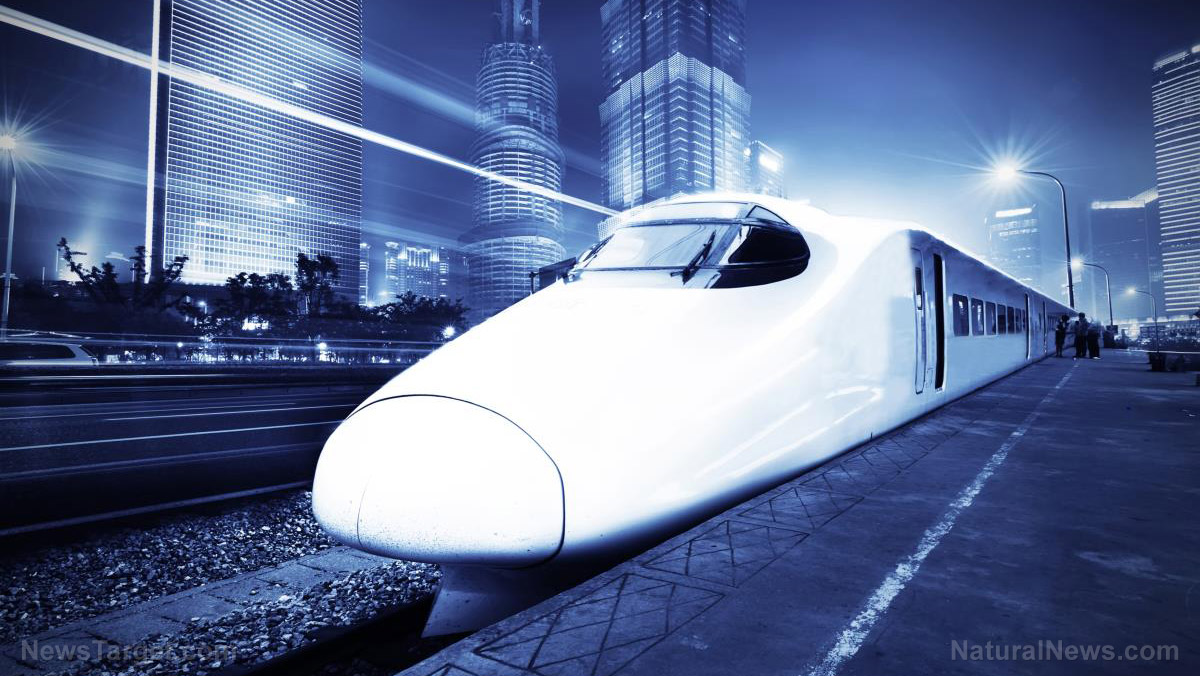China’s superfast bullet train network shows how antiquated the U.S. railway system truly is
07/03/2018 / By Edsel Cook

China is rapidly outpacing the U.S. in many ways. The most glaring comparison involves their respective railway systems. A recent Business Insider article highlights the Chinese high-speed railway, which is the largest in the world with some of the fastest bullet trains in service, while the American equivalent is all but nonexistent.
There are currently 15,500 miles of high-speed rail track in China. It will soon grow by 88 miles once the Guangzhou-Shenzhen-Hong Kong Express Rail Link is completed.
That staggering length falls short of the country’s ambitious plan for a rail network that spans 24,000 miles in total. This massive network will link together every Chinese city that has more than 500,000 residents.
As of 2018, there are more than 100 cities with a population that exceeds one million. By 2025, this number is expected to increase to 221 cities. (Related: Hydrogen-powered train on track for public use in the U.K. by 2020.)
Bullet trains can go anywhere in China at speeds comparable to flying
The Chinese high-speed train network allows a traveler to go practically anywhere in the country. When you include security inspections and check-in time, traveling by bullet train is just as fast as going by plane.
A trip from Beijing to the old imperial capital of Xi’an in Shaanxi province covers 746 miles. It will take two hours via airliner, 11 hours on the road, and 11.5 to 17.5 hours aboard a regular train. A bullet train, however, can cover that distance in 4.5 hours.
The closest U.S. equivalent is Amtrak’s Acela Express. Capable of traveling at 150 miles per hour (214 km per hour), the fastest train in the U.S. will still take 22 hours to traverse the 712 miles from New York to Chicago. The trip also requires a transfer in Washington, D.C. to a slower train.
Another example is a trip from Zhengzhou to Shenzen. The two Chinese cities are 992 miles apart, the same distance separating New York and Jacksonville, Florida. A high-speed train can cover that gap in just a little over six hours.
High-speed train rides are not only faster in China. They are also cheaper than their American equivalent.
A train ticket aboard the Acela Express from New York to Washington, D.C. often costs more than $200. In comparison, the price of a seat aboard a much newer and faster Chinese bullet train rarely reaches $100 despite covering much larger distances at far higher speeds.
Chinese high-speed rail program proceeding at breakneck pace despite corruption snags
China has come a long way from its first high-speed rail line in 2008. That ancestral line was 70 miles long and intended as a mere demonstrator for the Beijing Olympics.
The current Five Year Plan (2016-2020) has allocated $550 billion for the country’s railway system. High-speed rail is prioritized over regular track.
The huge plan has hit some snags. Many cities and provinces have taken advantage of the extravagant funding to splurge on costly and fancy train stations that are too far from the city centers which need them.
Chinese media company Caixin reported that local governments were deliberately placing the facilities in underdeveloped areas. Doing so would raise real estate prices and encourage economic development for when the high-speed rail network links up with the stations.
Despite these and other problems, China’s high-speed railways are still expanding.
Meanwhile, experts say U.S. high-speed rail was neglected for a number of reasons. Not only is the U.S. a big nation, but its major cities are placed much further apart than its Chinese equivalent.
Furthermore, the U.S. also has a lower population density than China, the European Union, or Japan. It also has a strong history of automobile ownership.
For a look at the traditional side of China, visit ChineseMedicine.news.
Sources include:
Tagged Under: bullet trains, China, corruption, future tech, high speed trains, innovation, railways, science and technology, Train, train travel, transportation




















